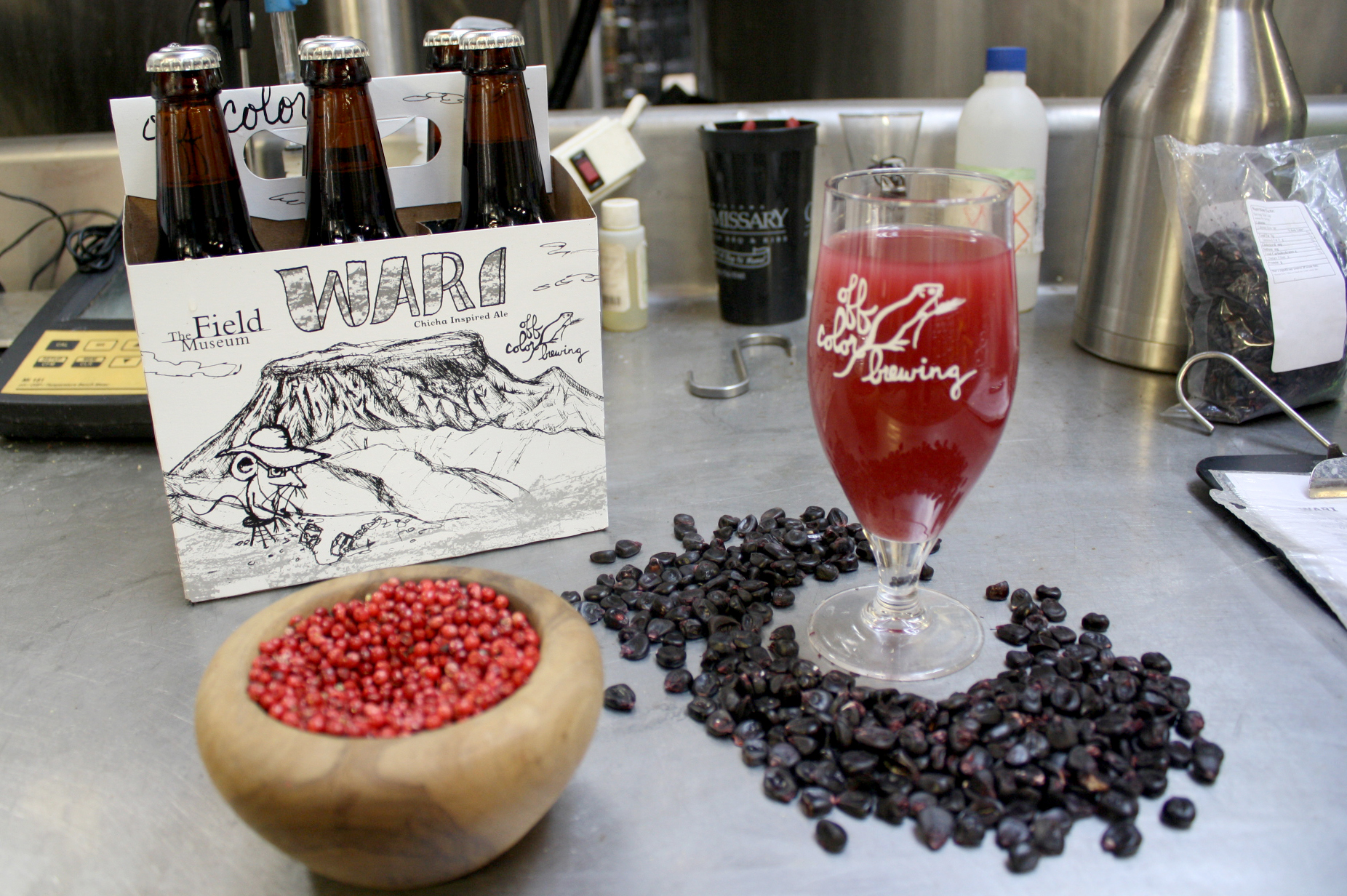
USD researcher helps unearth ingredient for ancient beer
A Chicago brewing company is utilizing a thousand-year-old Peruvian beer recipe to produce some suds in the modern day, thanks in part to the work of a USD faculty member.
Matthew Sayre, a USD archaeology instructor and researcher, was part of a 2002 expedition that discovered molle (peppercorn) seeds in Cerra Bau’l – the name for an ancient Wari site – in Peru. The Wari civilization thrived in the South American country between 500 A.D. and 1100 A.D.
The Cerra Bau’l site Sayre worked at was home to a large brewery, which produced the beer for celebrations more than 1,000 years ago. The purple chicha, a type of beer made from corn, was mixed with the molle seeds to produce large quantities of the brew.
Sayre said he’s enthusiastic about the production and rebirth of this beer.
“People have always shown how different they are by what they eat,” he said. “The Wari show how different they are by what the drink.”
While he hasn’t personally tasted the beer, Sayre said he hopes to soon.
Off Color Brewing first produced the beer, called Wari Chicha de Molle, for the Field Museum in Chicago. The brewery used techniques similar to those of the Wari people from more than 1,000 years ago to make it.
While the beer isn’t being sold in South Dakota yet, distributors can contact Off Color Brewing about an opportunity to distribute the beer. Off Color bought all the purple corn they could from Peru and will make the beer until their corn supply runs out.
Ryan Williams, associate curator of anthropology at the museum, discovered the ancient brewery that led to the discovery of the beer.
Williams has been the director of the Cerra Bau’l excavation – where Sayre discovered the peppercorn – since 1997, and has worked with Sayre for more than a decade.
“Archaeology is a small world,” Williams said. “I’ve always been a big fan of his work.”
The beer was first available March 3 at Hop To It, an event held at the Field Museum to debut the drink. The event featured Wari artifacts and was attended by Williams, who discussed the discovery of the brewery.
Off Color Brewing was started in 2013 by John Laffler and Dave Bleitner, who met at brewing school. They’ve been engaged in a collaboration with the Fields Museum since April 2015 producing Tooth and Claw – a beer available exclusively at the museum.
Tooth and Claw was named after the museum’s biggest attraction, Sue – the Tyrannosaurs Rex discovered in South Dakota in 1990.
Since Tooth and Claw has been a huge success, Off Color was tapped by the museum to brew the Wari beer.
Laffler described the taste of the Wari Chicha de Molle as unusual.
“It’s like no other – spicy pepper notes, strong lactic acidity, dry and light on the palate,” Laffler said.
Graduate student Aaron Mayer has been researching the Wari people alongside Sayre since 2012. Mayer has primarily researched the Wari on campus, but has been to an excavation site in Peru twice.
Mayer said Wari Chicha de Molle could have served an important role in the now extinct culture.
“Today in the Peruvian Andes, which may have rung true in the past, Chicha [de Molle was] used to help strengthen bonds and political relationships,” he said.
Sayre said he’s optimistic about the future of the research on the Wari culture.
“It’s a fun project that brings the past alive,” Sayre said.


